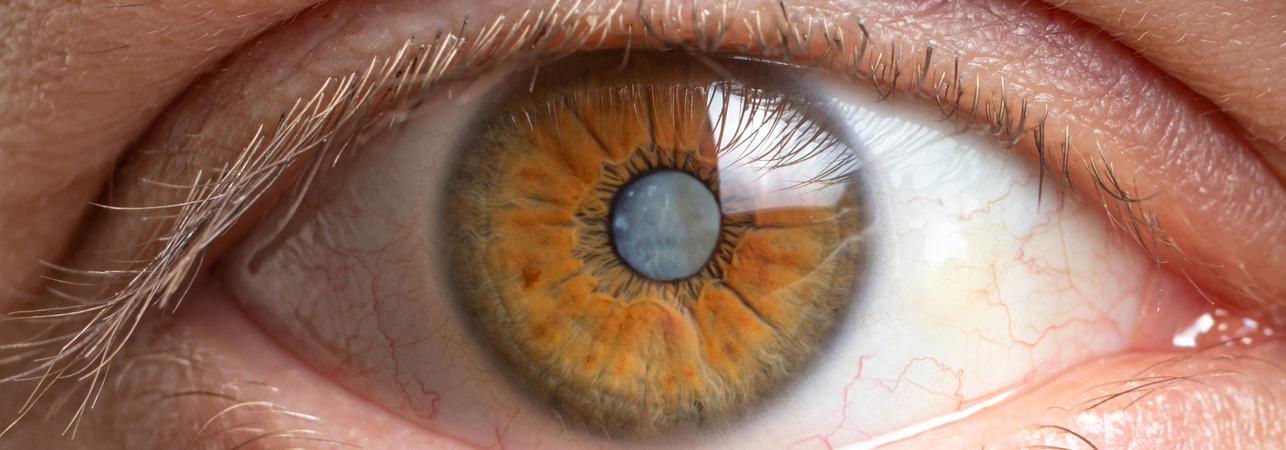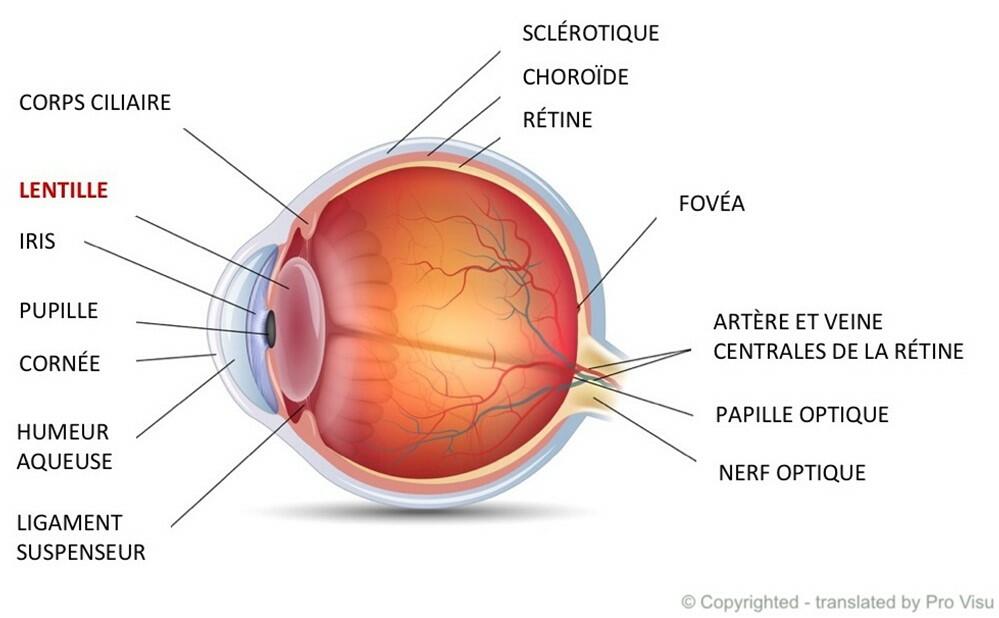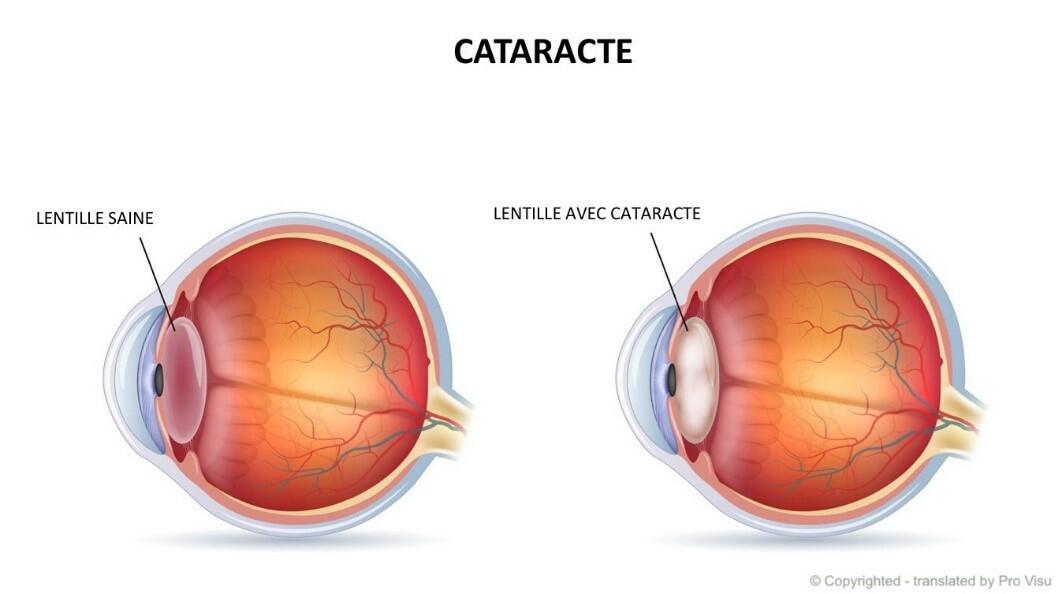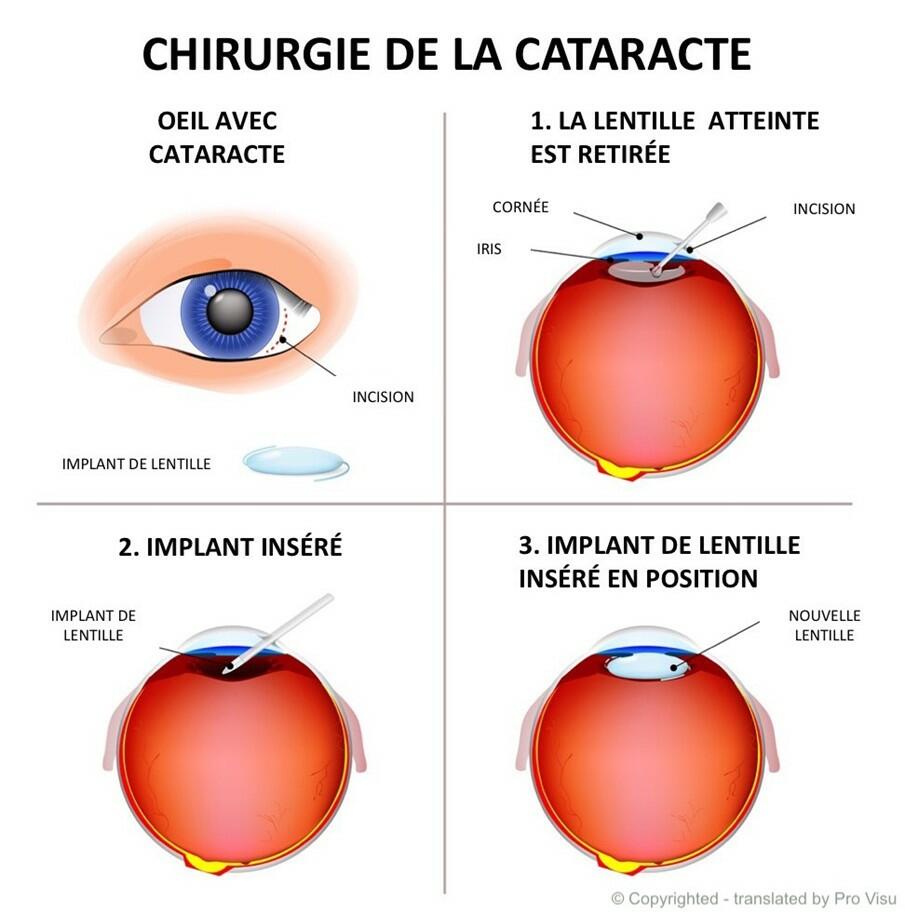Diseases
Cataracts

Definition
Cataracts affect the crystalline lens behind the pupil, making it opaque.
Normally transparent, the crystalline lens plays an important role, enabling the eye not only to accommodate and focus for sharp vision, but also to absorb ultraviolet rays, protecting the retina. Opacification of the retina causes vision problems that can lead to blindness. Medical care is needed to prevent this from happening, and to avoid the potential onset of acute glaucoma.
There are several types of cataract, classified according to, for example, the location of the opacity or the cause of its appearance.
- Senile cataracts are the most common. It is directly linked to the aging of the crystalline lens, whose structure changes with age, becoming less and less transparent over time. It affects both eyes, with varying degrees of severity. If the opacification concerns the periphery of the lens, vision will be little affected. On the other hand, if the opacification affects the center of the lens, symptoms that make reading difficult will quickly appear.
- Secondary cataracts develop as a result of disease (often poorly controlled diabetes), drug treatment (such as corticosteroids), cancer radiotherapy or eye surgery.
- Traumatic cataracts appear following trauma to the eye, such as a shock or thermal/chemical burn. This type of cataract mainly affects young people.
- Cataracts in children are often congenital in origin. It may be linked to a genetic disease such as trisomy 21, but it may also be the result of an infection during pregnancy (rubella, toxoplasmosis, genital herpes, etc.).
Causes
The main risk factor for cataracts is age, but there are also other risk factors such as :
- High myopia
- Age-related macular degeneration (AMD)
- Chronic glaucoma
- Poorly controlled diabetes
- Living in sunny or high-altitude regions, where ultraviolet rays accelerate lens aging
- trauma to the eye
- eye surgery
- cancer radiotherapy
It would also appear that smokers, alcoholics and those with a diet insufficiently rich in fruit and vegetables are also more affected by this eye disease.
Symptoms
The main symptom is a progressive loss of vision, usually distance vision. More precisely, when the nucleus is affected, the person becomes myopic, and when the envelope at the back of the crystalline lens is affected by opacification, he or she becomes hypermetropic and has difficulty reading.
Other symptoms include
- Sensitivity to light
- Glare, especially when driving at night
- A halo around lights
- double images
- Color changes, becoming increasingly dull
Other symptoms also exist:
Sensitivity to light
glare, especially when driving at night
a halo around lights
double images
Color changes, becoming increasingly dull
Diagnostic
Cataracts are diagnosed by examining the crystalline lens, after dilating the pupil. This examination reveals any opacity in the eye's lens, which may be located :
- in the center of the lens (nucleus): distance vision will be affected
- In the posterior part of the lens: this is often the case with diabetics or those on long-term corticosteroid treatment.
- On the periphery of the lens (cortex)
- On the entire lens
Eye pressure is also checked for glaucoma, as is the general condition of the retina, in search of AMD.
Treatments
Cataract treatment is exclusively surgical. The surgical technique consists of replacing the crystalline lens with an implant, enabling the recovery of adequate vision. The operation is usually performed under local anaesthetic, usually on an outpatient basis. Following the operation, the eye is fitted with a shell for several days, to enhance healing and protect it from external aggression. Antibiotic eye drops and anti-inflammatories are also prescribed.
Although cataracts often affect both eyes, surgery is performed on only one eye at a time, with a few months between operations. Cataract surgery is safe and effective, and is the most widely performed surgery in the world.
Contenu revu et contrôlé le 2/05/2023.




